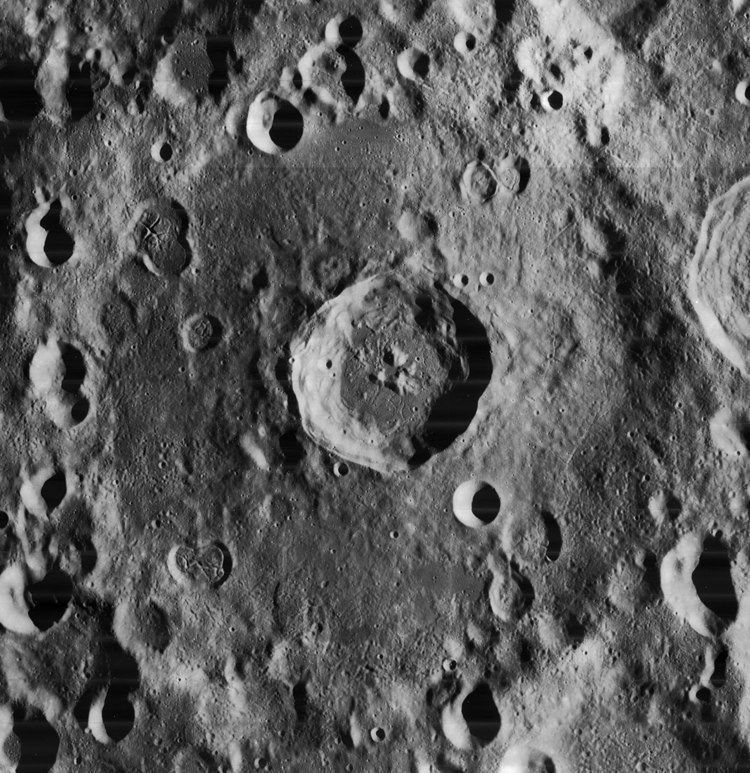Diameter 181 km Colongitude 91° at sunrise | Depth Unknown | |
 | ||
Einstein is a large lunar crater that lies along the western limb of the Moon, making it difficult to observe from the Earth. The visibility of this formation is affected by libration effects, but even under the best conditions not much detail can be observed except from lunar orbit. Nearby craters of note include Moseley just to the north, Dalton along the eastern rim, Vasco da Gama just to the southeast, and Bohr to the south-southeast. The formation Vallis Bohr is visible to the south.
The outer rim of this walled plain has been strongly obliterated by many small impacts. Occupying the center of the interior floor is Einstein A, an impact crater with terraced inner walls and a central peak. The outer rampart of this concentric crater spreads across the interior floor, covering over half the diameter of Einstein. Several smaller craters also lie scattered across the floor, but there are sections of relatively flat surface in the southwest part of the floor. Two small craters on the west side have fissured floors. These are believed to be secondary craters from the Orientale impact to the south.
Widespread version that this crater was discovered by Patrick Moore in 1939 is probably erroneous. In the middle of the 20th century Hugh Percy Wilkins designated this crater Caramuel to honor Juan Caramuel y Lobkowitz. The crater was known under this unofficial name for some time, but this name (and almost all other Wilkins' designations) wasn't adopted by the International Astronomical Union. In 1963 E. Whitaker and D.W.G. Arthur designated this crater Einstein after Albert Einstein, and in 1964 this name was adopted by the IAU. Wilkins' map also contains a crater called Einstein, but it is a less noticeable one – Simpelius D.
Satellite craters
By convention these features are identified on lunar maps by placing the letter on the side of the crater midpoint that is closest to Einstein.
